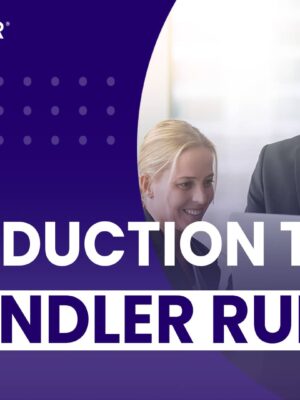How to Effectively Nurture Prospects and Gain Clients

We recently released a podcast that discussed how to get more qualified prospects for leads, and then we followed that up with a blog post detailing the intricacies of being an effective cold caller. So we’ve established the importance of generating leads and how to go about doing that. What happens next?
This blog will illustrate several techniques to nurture those prospects in your funnel and how to effectively turn them into clients. The ability to do this is what separates good salespeople from just good networkers. Below are four keys to developing a successful nurture funnel and how to convert your prospects into clients.
1. Establish what a ‘prospect’ is.
Just because you’ve gotten in contact with or have received the name of an individual, doesn’t mean they’re a qualified prospect. Typically, Sandler sellers consider prospects by the following criteria:
- Pain – A problem you can solve
- Budget – Time, money and energy to invest in solving the problem
- Decision-Making Process – Criteria for choosing a provider and a timeline
Determining these three pieces of information is the difference between picking up a phonebook and having a purpose for reaching out to individuals. One of the biggest mistakes a young or inexperienced seller makes is not pre-qualifying his or her leads. Make sure you know who you’re approaching, why you are reaching out, and their ability or intention to buy. If you sense that your prospect is emotionally involved in solving the problem they’re experiencing, there’s a chance they’re ready and willing to buy.
2. Have a follow-up plan.
Getting names into your prospect bank is just the start. Next, you must decide what to do with them. A customer relationship management system is a good place to begin. Track the prospects you encounter and schedule follow-ups with each of them. Trial and error may be required here, as each seller and industry is different in regards to how often you should touch a prospect.
What remains constant across all platforms is the need to be diligent with timing and how to interact with your contacts. Have a plan in place for each level of follow up. For example, the first touch point may be a voicemail, while the second touch point may be a LinkedIn message or email. This process will look different for each seller, but it is imperative that you stay on top of recording your intentions and posting your results. This will help you learn from your mistakes and successes and stay on top of the remaining contacts you must engage with. Most salespeople do not follow up enough.
3. Be formulaic, but creative.
In a world that is dominated by numbers and ratios, it’s essential that you have a method to your madness. Like we addressed above, utilizing a CRM system can help you do this, but it can only do so much. Breaking down your approach into actionable steps is right in theory, but depending on the prospect, variance will be necessary.
Consider each encounter and each contact with your prospects singularly, but keep the complete sales process in mind. When communicating with these individuals, take copious case notes to better help you plan for future conversations with them. This is another way to learn from the interactions you have, and how you can adjust your approach with future prospects. Having detailed accounts of each prospect allows you to better customize your approach to converting them. This is where you must stick to your plan – hit everyone in your funnel as scheduled – but get creative, treating each prospect as a new opportunity and personalizing each message. In order to do this, you must know the steps your prospects walk through when making a buying decision.
4. Know when to close the sale or close the file.
Some call it dead-filing, some call it inactive, and some refer to it as a “no.” At Sandler, we call it closing the file. When a prospect is not going to convert, you need to determine when to close the file and move on to your next prospect. In the world of selling, if you’re wasting time on prospects who ultimately won’t buy from you, you’re putting yourself in the worst possible position to meet your goals and convert someone who will.
Once they’ve been placed in your funnel, it takes skill and practice to quickly know who those prospects are which are going to move forward, and to recognize and understand the signs that indicate that it’s time to close the file. Once you determine a prospect that won’t be buying from you, place them in your inactive or quiet file, and plan to reach back out to them after another sales cycle. At that point, if they’re still not going to be converted, eliminate them from your list and move onto a better, more qualified prospect. You can also turn them back over to the marketing department for further nurturing.
Getting leads is tough, but it’s just the start. Once established as a prospect, it is your duty to convert them into clients. By defining these terms, creating a plan, getting creative, and knowing when to call it quits, you can begin to optimize this process and become a top seller.
Learn more about approaching and qualifying prospects with these social selling tips!








